-
About Calathea
Calathea assortmentThe Calathea originates from the jungles of South America and the Amazon region . What makes this tropical houseplant extra special? In the evening the leaves of the Calathea close and it shows the beautiful dark purple or deep red colors on the underside of its leaves. They open again in the morning. This helps the plant retain moisture and prevent it from losing too much water through transpiration at night. If you listen carefully, you can even hear a rushing sound.
-
Features Calathea
- Little thirst
- Partial shade
- Air purifying
- Non-toxic to pets
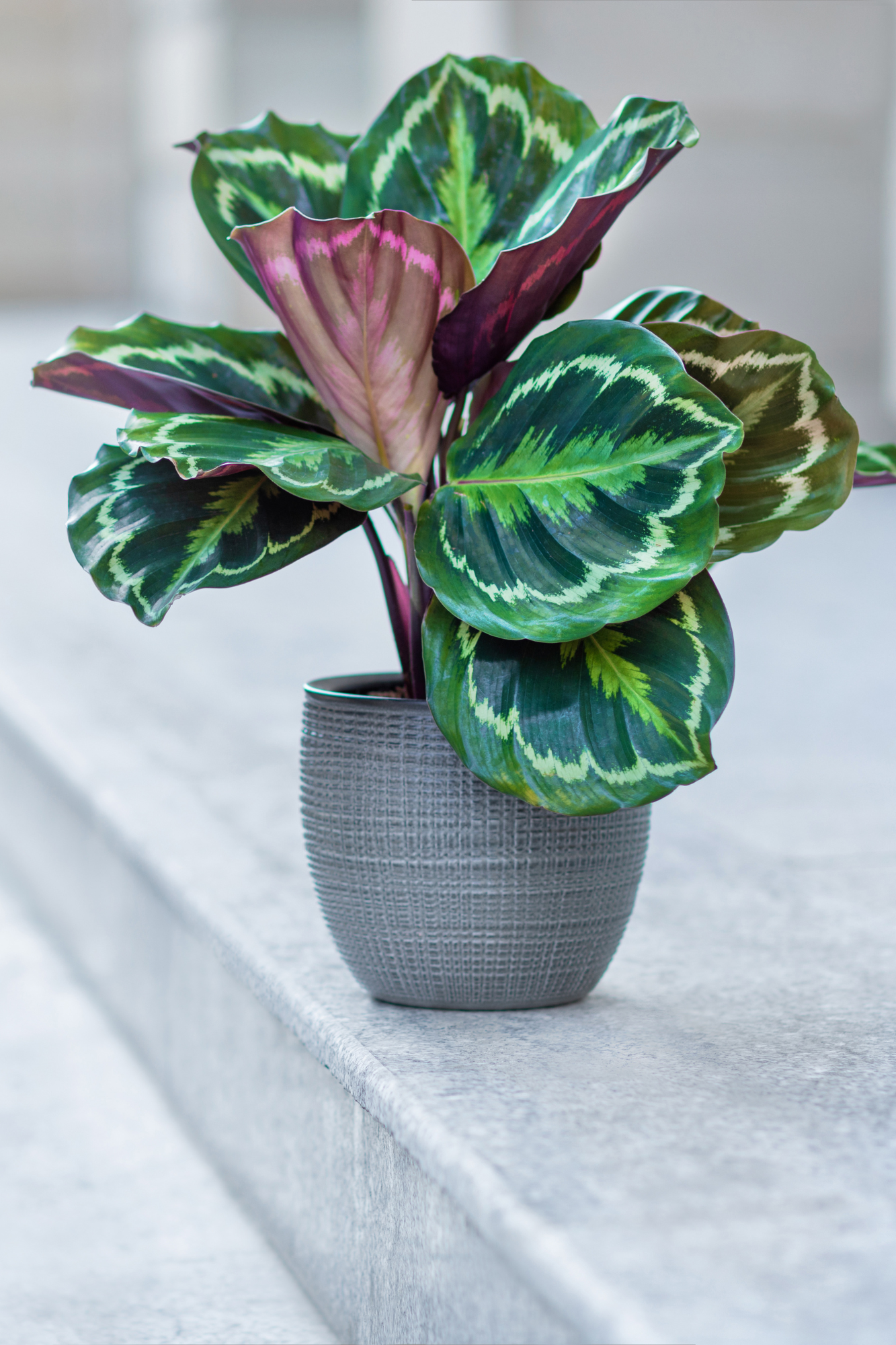
Care of the Calathea (Peacock Plant)
Watering Calathea
It is best to give your Calathea small amounts of water regularly . In the summer this will be necessary on average twice a week. In winter you can safely water less. It is especially important that the plant is in slightly moist soil . There should not be a layer of water under the pot. The exact amount of water your Calathea should receive depends on the season, the size of your plant and pot and the location of the plant.
Make sure the soil never dries out . You do this by occasionally sticking your finger in the soil and feeling whether the soil is still moist. Is the ground starting to dry? Then water your Calathea again.
Do you notice one day that your plant is starting to droop or are the leaves curling up ? Then you gave it too little water . If you get there in time, you can still save him. Give it some water again and the leaves will become nice and strong again.
The Calathea is used to the humid jungle of South America. Spraying the leaves with water will therefore significantly improve the health of your plant.
Care products for you Calathea
-
Organic houseplant food
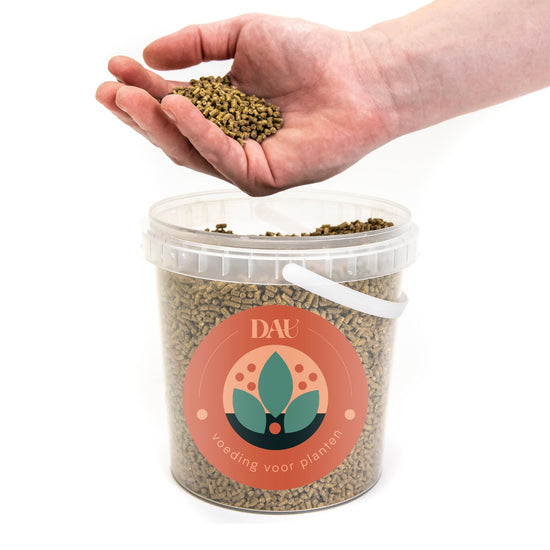 Organic houseplant food
Organic houseplant food- Normal price
-
€16,99 - Discount price
-
€16,99
Quick view
-
Organic potting soil - 5 liters
 Organic potting soil - 5 liters
Organic potting soil - 5 liters- Normal price
-
€3,99 - Discount price
-
€3,99
Quick view
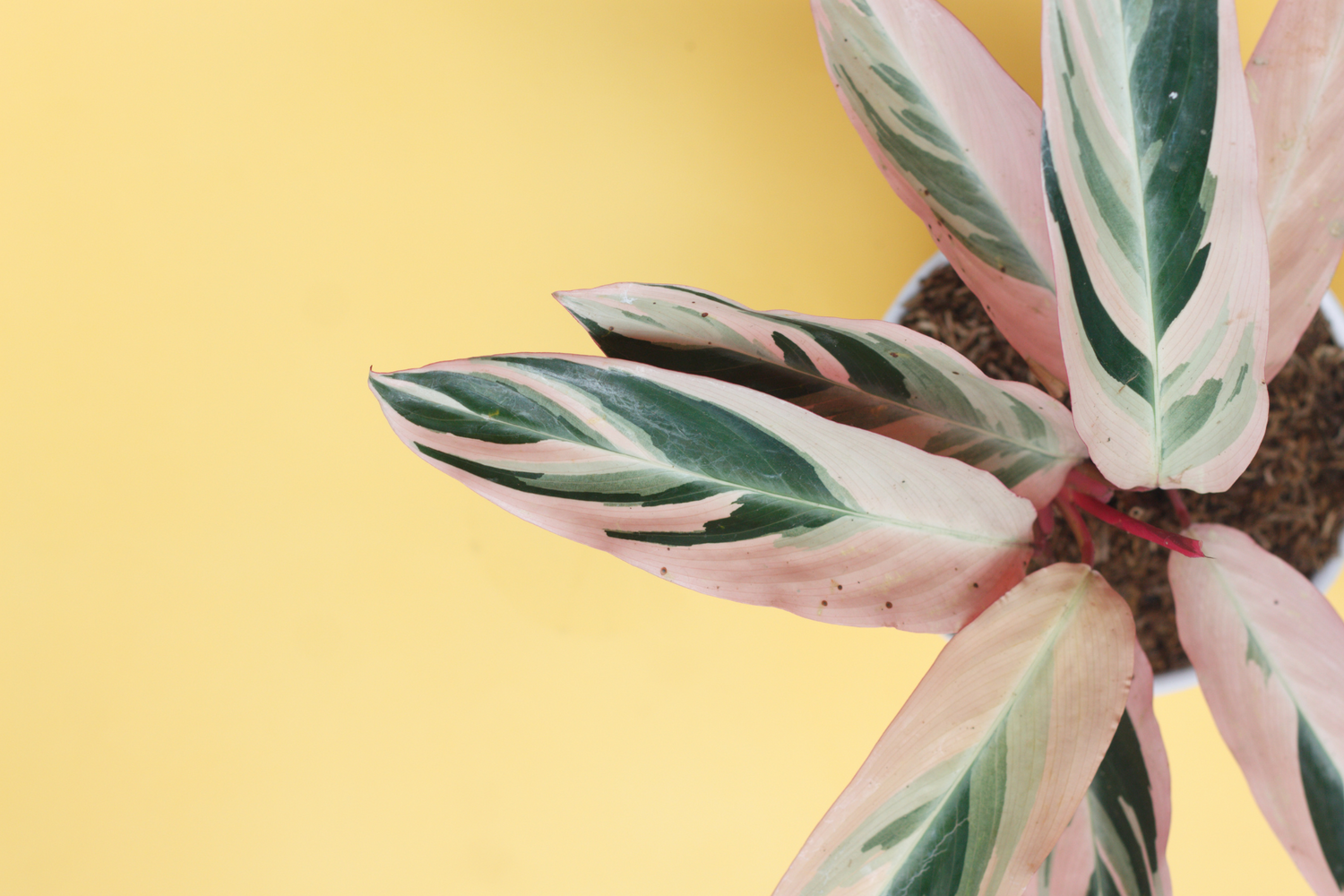
Light and temperature
Because the Calathea is used to the shady jungles of South America, it is best to place it at home in a place with a lot of shade. Ideally in a location with (half) shade and certainly no direct sunlight .
In addition to shade, the Calathea also requires high humidity . Avoid drafts and do not place your Calathea near radiators.
During the day, Calathea enjoys an average temperature of 17°C . At night, 14°C is enough for your Calathea.
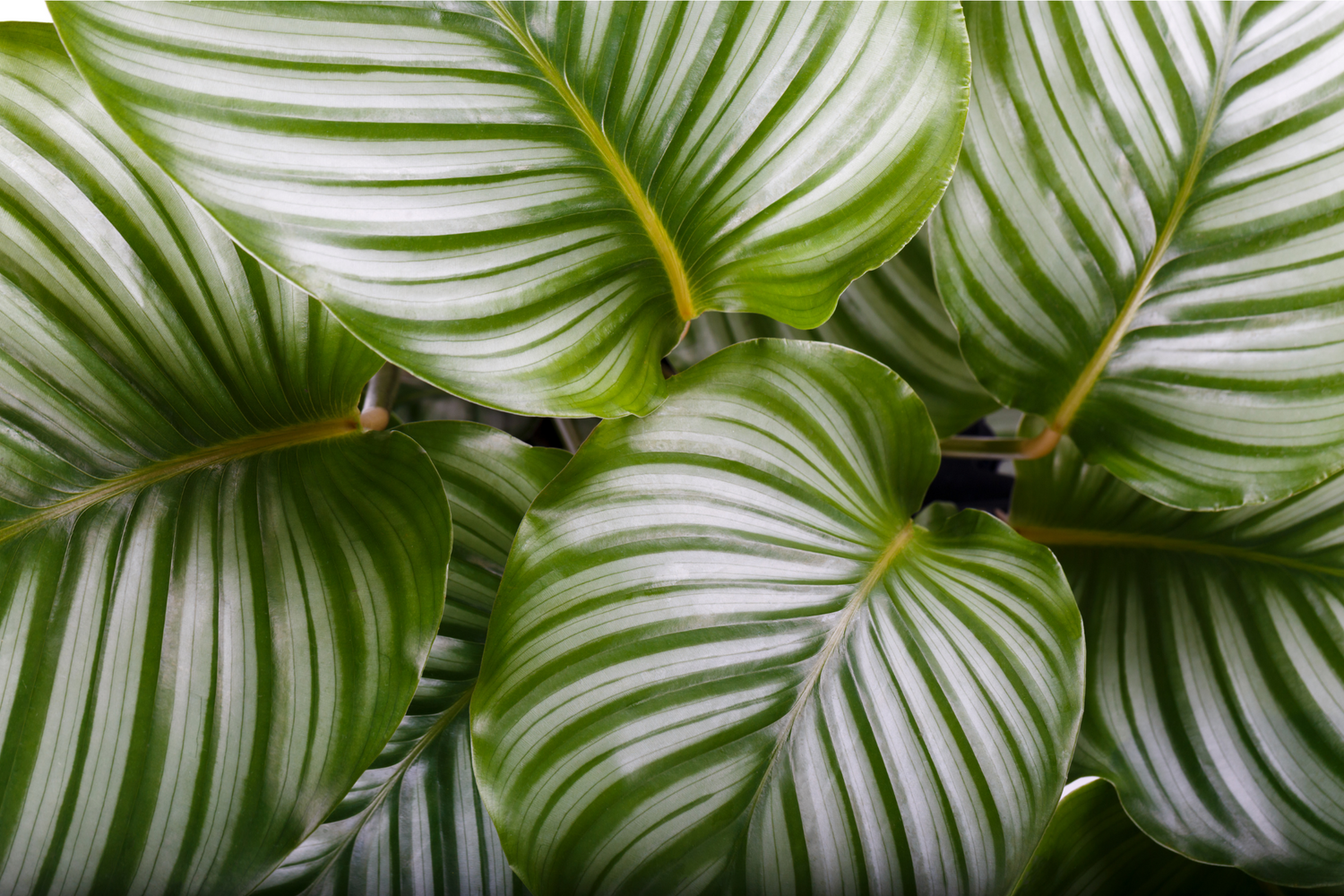
Feed Calathea
Does your Calathea produce new leaves in summer and spring? That takes a lot of energy for your plant. Extra nutrition at that time can certainly be beneficial to the health of your plant. Sufficient nutrients also ensure that your leaves maintain their radiant color .
We recommend organic potting soil and food for a Calathea.
Calathea cuttings
You can propagate your Calathea by tearing it. So you can simply tear off a piece ( with roots ) from your existing plant. Just make sure that each shoot has at least three leaves. After tearing, it is best to place your Calathea cutting in a warm and shady spot in organic potting soil . Over time, roots are produced and new leaves appear.
Calatheas cuttings are best taken in the spring . Then the plant has enough energy to repair any damaged roots.
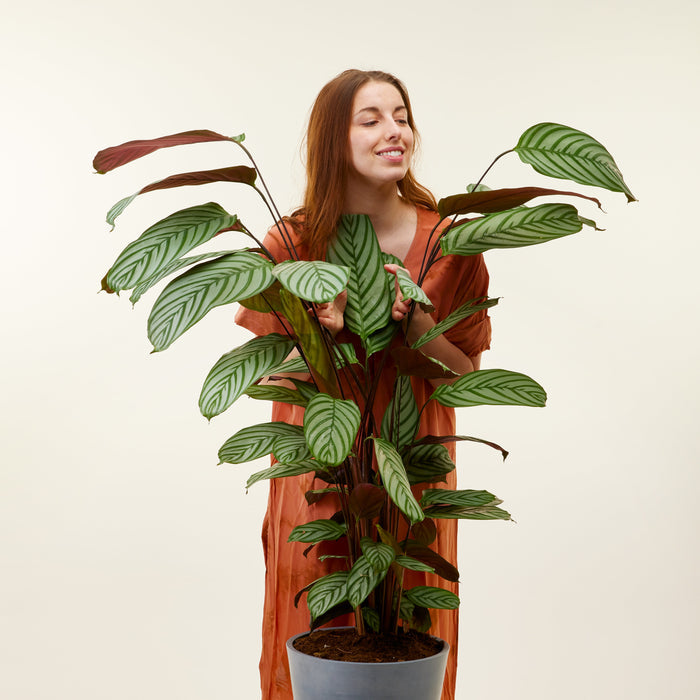
Pruning Calathea
Does your Calathea suffer from old and ugly leaves ? Then it is best to cut it low to the ground . This way your plant does not lose unnecessary energy and it retains its ornamental value.
The Calathea never gets really big. Pruning to keep the plant small is therefore absolutely not necessary.
Repotting Calathea
If your Calathea's pot becomes too small, you will need to repot it. If you can no longer push the plastic pot in because there are too many roots in it, you need to repot it. It is best to repot in the spring because the plant will then recover more quickly from any damage.
Always choose a new pot that is on average 20% larger than the previous pot. If you do not repot your Calathea, it is likely that too little moisture can be stored in the soil. This increases the risk of dehydration .
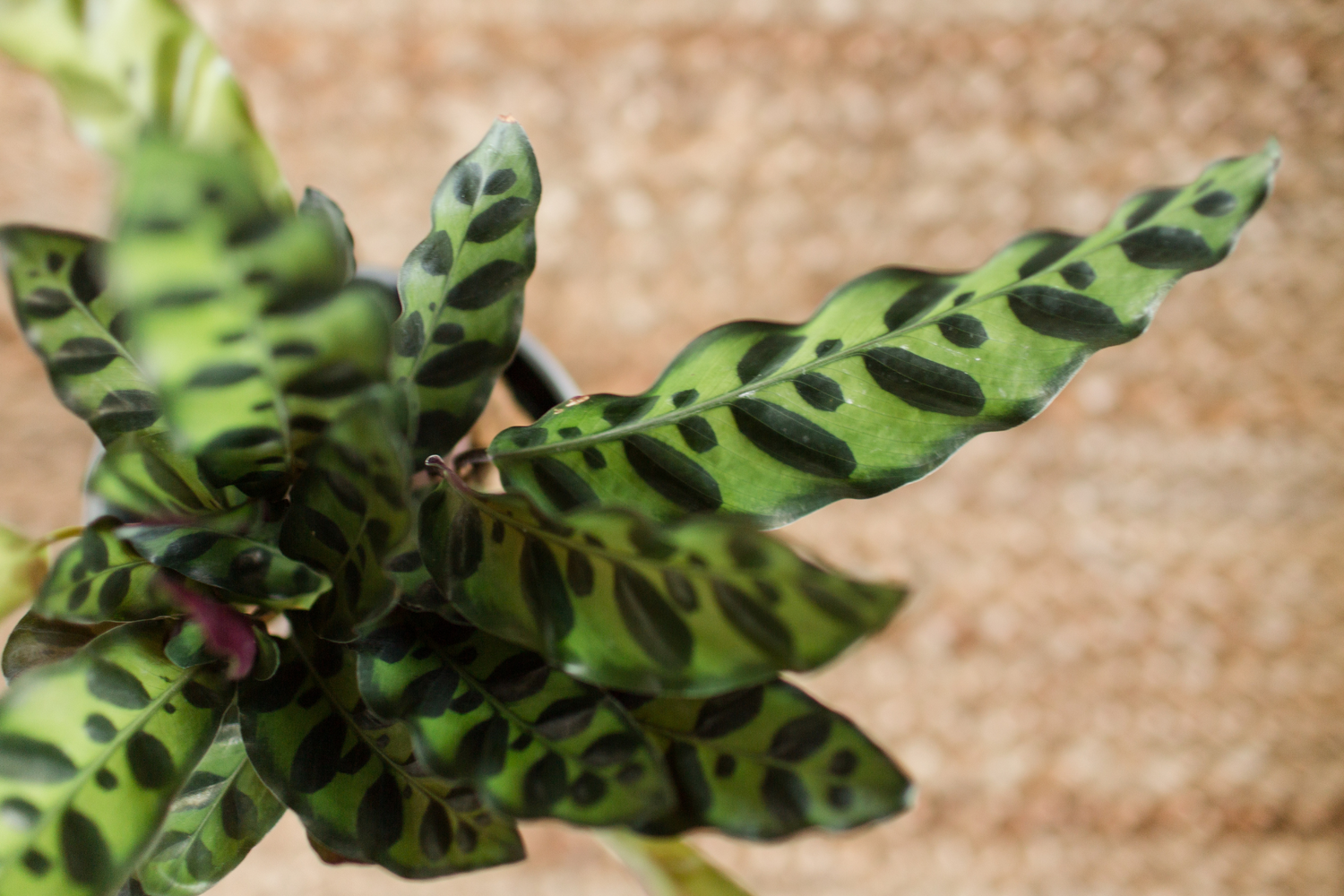
Typical Calathea problems
When the heater is turned on in the autumn, your Calathea may suffer from spider mites . That is an infection of small white mites on your houseplant. You can avoid this by spraying sufficiently or using a biological pesticide.
Is a Calathea poisonous?
No, a Calathea is not poisonous and therefore safe for children and pets.
Our most popular houseplants!
-
Maranta leuconeura 'Tricolor' | Prayer plant
 Maranta leuconeura 'Tricolor' | Prayer plant
Maranta leuconeura 'Tricolor' | Prayer plant- Normal price
-
€8,99 - Discount price
-
€8,99
Quick view
-
Alocasia reginula 'Black Velvet' | Elephant ear
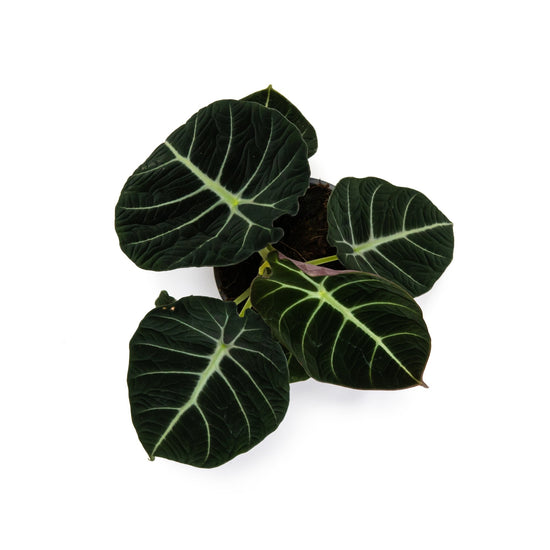 Alocasia reginula 'Black Velvet' | Elephant ear
Alocasia reginula 'Black Velvet' | Elephant ear- Normal price
-
€11,19 - Normal price
-
€13,99 - Discount price
-
€11,19
Quick view
-
Peperomia argyreia | Watermelon Peperomia
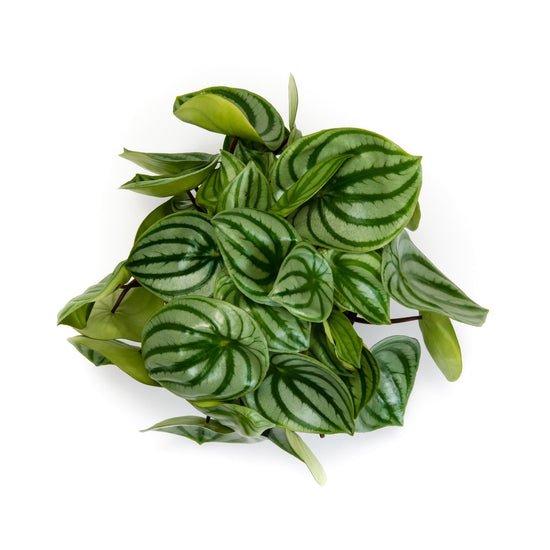 Peperomia argyreia | Watermelon Peperomia
Peperomia argyreia | Watermelon Peperomia- Normal price
-
€12,99 - Discount price
-
€12,99
Quick view
-
Zamioculcas zamiifolia | ZZ plant
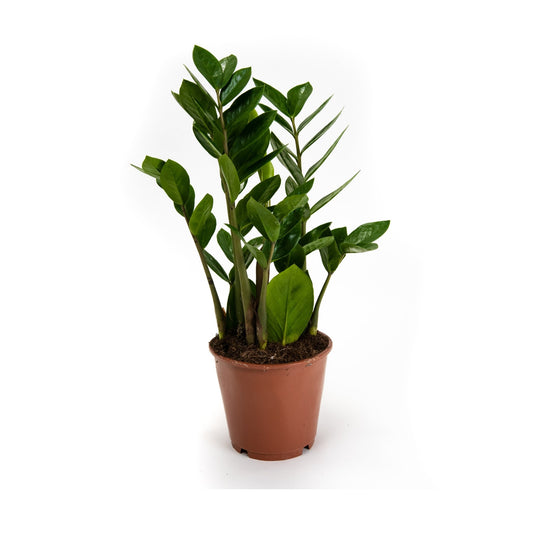 Zamioculcas zamiifolia | ZZ plant
Zamioculcas zamiifolia | ZZ plant- Normal price
-
€13,99 - Discount price
-
€13,99
Quick view







